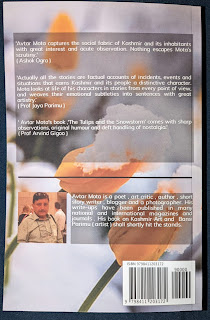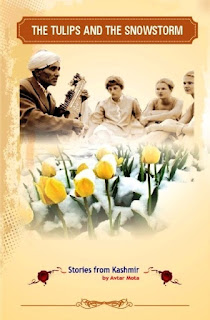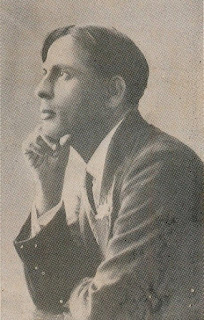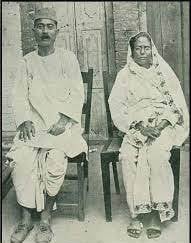( Above two photographs relate to international edition available on Amazon)
( Above two photographs relate to Indian edition)
THE TULIPS AND THE SNOWSTORM ( Stories from Kashmir)
by Avtar Mota
Price Rs440/-
I
don't claim to know the skills of story writing but what I assure
every reader about the stories contained in this book is as under:-
(1) The gripping narrative of every story shall enthuse ,involve and entertain you.
(2) The easily identifiable characters in these stories are ordinary human beings who get trapped in situations beyond their control. Even when they look to the sky over their head for resolution and relief ,it responds with indifference that is luckily benign. If they smile, you smile with them. And if they are pensive , they make you pensive too. These characters bring you to the book again and again.
(3) The
stories reveal happy living , nostalgia, empathy ,helplessness, pretence
and sorrows of exile. The shift in our value system , whereby utility
and expediency are replacing every other old value is also visible in
some stories .
In one of my stories , Tarawati is tempted to buy Kohalrabi ( Kadam ) that suddenly arrives in the Sabzi Mandi .In the mid-day heat , she walks to her shelter ,satisfied and happy carrying the prized Kohlrabi( Kadam) but dies of heatstroke . She is an exile who has lost her identity and environment and finds a gleaming hope of survival at the sight of Kohalrabi . I have received affectionate Kudos from a Professor in the US for scripting Tarawati's obituary in the story. The story 'Do Not Say Bangaluru Again " reflects clash of perspective between young and old. "Book Release "and "Award Winners" fall in humour and satire category. 'A Day Inside Lalla Ded Maternity Hospital , Srinagar ', ‘Qazigund :Anda Chai Paratha and Bathroom ‘ and ‘The Afghan Dry Fruit Seller ‘ are packed with truthful and gripping humour . So are the stories like ‘ Shoe theft in Kashmiri society’, ‘ Dudda or the Uninvited Guest in Kashmiri Marriage Feast’ , ‘Gossip Shops of Rainawari ‘ and ‘ Kashmiris and Humour’.
‘ Mother ‘ is another story based on ' Mother- Child ' relation told in a different style . Unforgettable Nazir Ahmed " is the story of a brave, innocent and honest footpath vendor. ‘Terminal Dues‘ and ‘Bank Loan Guarantor’ present complex issues that the exiled Kashmiri Pandit community faced after 1990.
In these stories, you may find
settled people becoming travellers. Families disintegrating as children
get educated and move to far off lands in search of jobs . Only senior
citizens live in the houses that they had built for their families
.Loneliness hangs on doors and windows . Deep freezers arrive in the
society to enable children to join the Final Samaskara ( funerals ) of
their parents . Old traditions and customs come under enormous
pressure . The runaway technology appears imposing a strange and all
engulfing dehumanising process .
I personally believe that a
writer is a part of the system. He is in it yet above it. He has to
be at a spot that could be called as his intellectual observatory. For
my readers , I present excerpts from some stories
(1)
(
Sarvanand had witnessed how some hooligans had made obscene gestures in
front of the dais from which Mrs Indira Gandhi had addressed her
election rally at the Hazoori Bagh park
in Srinagar city.
………………………Sarvanand looked around and saw that everybody in the gathering
belonged to the National Conference cadre. He saw Ghulam Nabi (tailor),
Ismail Gujri (milk seller), Rahim Naavid (barber) and Habib Ganai
(butcher) looking expectantly for his reply. Everybody knew that Pandits
in Kashmir would vote for the Congress party in that particular
election. Sarvanand had also come with that purpose. But then looking at
the situation, Sarvanand had to say something different.
“ We
have one mission here. Alla-Baen or the plough (election symbol of the
National Conference party) must win. Who can forget the role of the
National Conference and its leader Sheikh Mohammed Abdullah? ‘Sher i
Kashmir ka kya irshaad, Hindu - Muslim - Sikh Ittehaad’ or Hindu, Muslim
and Sikh unity has been the slogan of Sheikh Mohammad Abdullah.” Said
Sarvanand.
“Pandit Ji that is good. Don’t worry. We have done the
same. Your vote has been cast. Please tell your neighbour Dina Nath Ji
not to trouble himself by coming to this polling booth. His vote has
also been cast. You Ismaala (Ismail), give the special curd Lassi to
Pandit Ji. He looks exhausted.”)
( From the short story ‘ Curd Lassi 1983’ in Part I )
(2)
( “ What is Shastar, caste or surname ?”
“
Neither caste nor surname, It is a Kashmiri word meaning iron that is
tough and useful. Neither the Hindus nor the Muslims can live without
iron. So it is a real secular word. Shastar Sahib was toying with the
idea of using Traam (copper) or Sartal (brass) or Loi (bronze) as his
pseudonym but then Abdul Aziz and Mohan Kishen clarified to him that
these metals were not secular. They also advised him against Sonn (gold)
or Roff (silver) as these metals don’t get identified with his vote
bank. Shastar Sahib was also writing poetry when he was idle. After his
first innings as Minister of State for Forests, he forgot poetry but
continued using ‘Shastar’ as his pseudonym.”)
( From the short story ‘Book Release’ in Part I)
(3)
(When Ram Krishen heard it, he turned serious and said :-
“That
means the poor lady is to be kept in cold storage like a vegetable or
perishable commodity. This is not our Sanatan Dharma. This is not the
proper way to conduct final Samaskaara. This is not provided in our
sacred texts and the Shastras. We Kashmiri Pandits don’t go by these
short cuts. Who will keep her on the grass mat in the mortuary? Her body
needs to be kept facing particular directions. Who shall recite the
Bhagwat Geeta in the mortuary for her? Who will keep the earthen lamp
burning in the mortuary? We can keep her on ice slabs if we have
necessarily to wait for Sanjay. You should have told Sanjay that you are
performing the final Samaskaara tomorrow and he could have joined us
for the 10th day ritual (Kriya). It is not proper to shift a dead body
from the house and then again bring it back. After all you are dealing
with a soul that has yet to attain Moksha (salvation) through the Kriya
Karma (religious rituals).”)
( From the story ‘The Final Samaskara’ Part I)
(4)
(“Khan
pather me shigaaf se nahin nikla. Khan ka maa hai. Khan ka biwi hai .
Khan ka bacha hai. Khan ayaal mein rehta hai. Khan tabardaar hai. Sab
amraaz ka ilaaj karega. Yuk zenaana yuk mardaana ka beemari majlis mein
bataane laayak nahin. Aissa beemari par pardaa nahin rakhna. Ilaaj karna
zaroori. Khan bil khasoosan aissa beemari ka ilaaj karega. Apna
Kashmiri bhai koyi khaas baat karega. Apnaa Kashmiri bhai koyi khaas
ilaaj karega. Khan dawai bech kar yuk ba yuk sunega. Maalik shifa
bakshega. Yuk, dho, teen din mein dawai ka assar aayega. Abhi bolega to
hawa mein. Baad mein bolega to khan ki jaan ko.”)
(Khan was not
born out of a crack in some rock. Khan has a mother. Khan has a wife.
Khan has his children. Khan lives in a family. Khan is a family man.
Khan will cure every ailment.
Many men, many women may have ailments
not worth mentioning here openly. But don't hide such ailments. Get
these ailments treated. Khan will specifically treat such ailments. My
Kashmiri brothers can talk to Khan privately for such ailments. After
selling the medicine, Khan will attend to these secret ailments. God
will grant the desired cure. First, second and then the third day, you
will notice the effect of Khan's medicine. At this moment, you may curse
Khan but later on, all your good wishes will be for Khan.)
( From the Story ‘ The Herbal Tonic seller from Afghanistan’ in Part II )
(5)
(There
was a cloth shop owned by a Muslim from Malik family just opposite to
Ram Joo's chemist shop. The gossip mongers would start arriving at 5 pm
and by 6.30 pm the discussions would become loud. Ram Joo was a
Registered Medical Practitioner (RMP) and a skilled medical expert. He
was a helpful person. He had worked with Dr Ali Jan, the renowned
physician of Kashmir. However, the gossip mongers had brought total
gloom to his business and rendered waste all his expertise.
When
some family member of some gossip monger would try to go inside the
shop due to some exigency back at home, the owner of the 'Malik Cloth
Shop' would cry loudly:-
“Don't go inside. Kashmir' problem is in
its final stage of settlement. They are busy preparing the agreement
.Waldheim (Kurt Waldheim) has been waiting for this agreement at the UNO
office since last Monday. You must understand. You are educated young
man. Go back, tell your mother or the guest at your home to wait.")
( From the story Gossip Shops of Jogilanker, Rainawari in Part II)
The
book is available on Amazon( India ) . For immediate purchase on special discount price of Rs340/= ,
just call ROHIT PANDITA ( my agent ) on his moblie 09596976373 for
express and assured delivery of an autographed copy within 3 days through DTDC courier .
Pay by Google pay , NEFT , fund Transfer or PayTm.
Happy Reading ....
( Avtar Mota )
 CHINAR SHADE by Autarmota is licensed under a Creative Commons Attribution-Noncommercial-No Derivative Works 2.5 India License.
CHINAR SHADE by Autarmota is licensed under a Creative Commons Attribution-Noncommercial-No Derivative Works 2.5 India License.
Based on a work at http:\\autarmota.blogspot.com\.





















